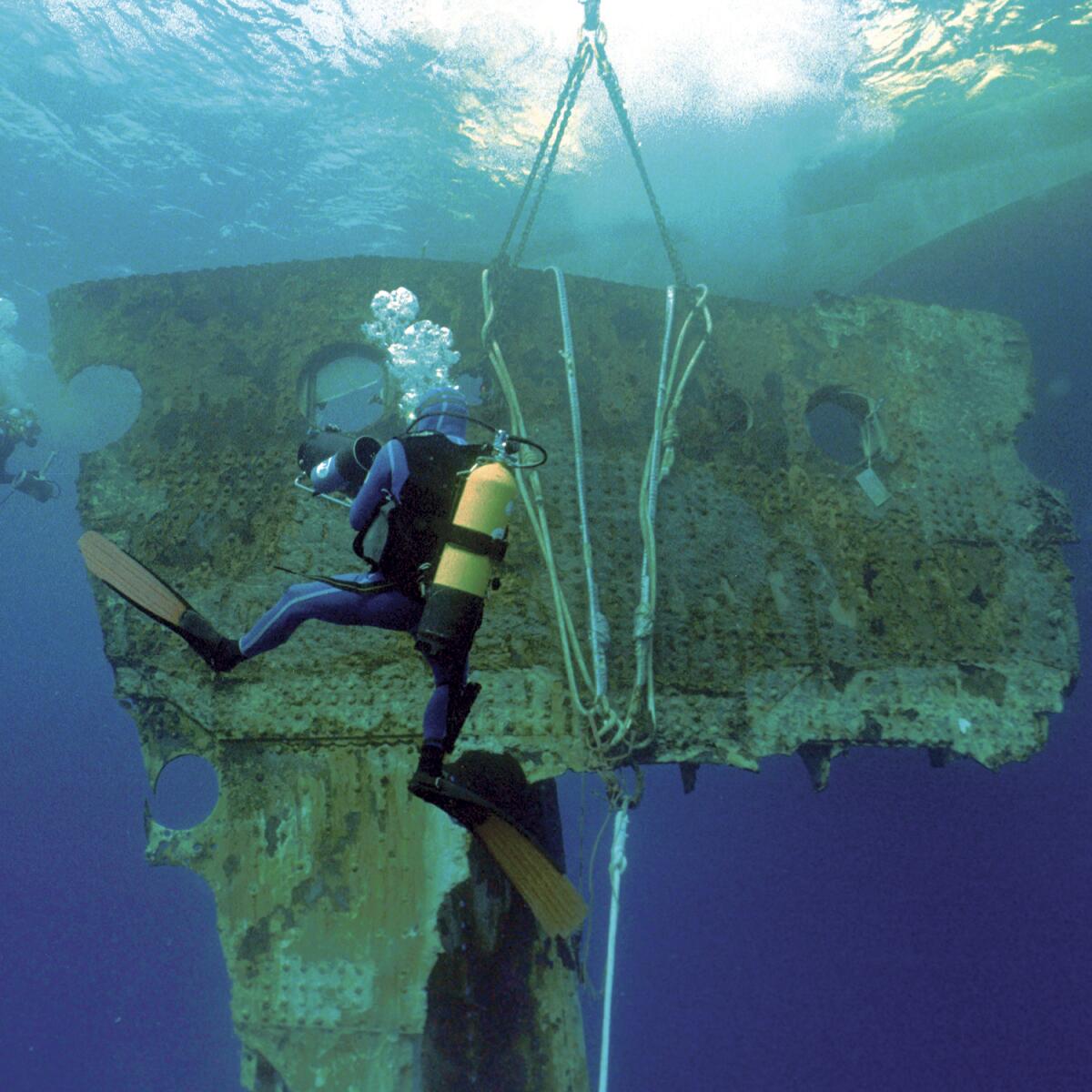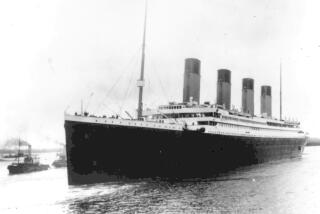Titanic tourist submersible carrying 5 disappears on trip to see wreck in North Atlantic

An intensifying search-and-rescue mission was underway Monday after a submersible watercraft used for tourist expeditions to view the wreck of the Titanic went missing Sunday with five people aboard in the North Atlantic, according to the U.S. Coast Guard.
The Coast Guard said on Twitter that it was searching for a 21-foot submersible from the Canadian research vessel Polar Prince that lost contact about 900 miles east of Cape Cod, Mass. The vessel “submerged Sunday morning, and the crew of the Polar Prince lost contact with them approximately 1 hour and 45 minutes into the vessel’s dive,” the Coast Guard wrote on Twitter.
A search-and-rescue mission is underway after a submersible used for tourist expeditions to view the Titanic wreck went missing in the North Atlantic.
One pilot or sub-commander operator and four mission specialists were on board, Coast Guard Rear Adm. John W. Mauger said in a Monday afternoon news conference. He declined to identify those on the missing vessel by name.
A C-130 aircraft is being used to conduct an aerial search both visually and with radar, according to Mauger. The Coast Guard has also coordinated with the Canadian coast guard and armed forces to deploy more assets. The Canadian coast guard also has committed a C-130 aircraft, as well as a submarine and sonar buoys to aid in the search.
It could be the blockbuster film, the human angle or technology’s limits. Nowhere does it resonate more than in Halifax, Canada, where some of the victims are buried.
The missing vessel was designed with a 96-hour sustainment capability if there’s any emergency onboard. Mauger said officials “anticipate that there is somewhere between the 70 to full 96 hours.”
“We’re using that time, making the best use of every moment of that time to locate the vessel,” he said.
The location being searched is a “remote area” about 13,000 feet deep, making it a challenging search-and-rescue effort, he said.
The U.S. Coast Guard will continue to fly the aircraft and move additional vessels into the area over the next couple of days to help with the search.
The Guardian reported that the sub is operated by OceanGate Expeditions, a company that offers visits to the Titanic wreck.
OceanGate confirmed its vessel was missing and posted a statement on Twitter on Monday afternoon. “We are exploring and mobilizing all options to bring the crew back safely,” the company said. “Our entire focus is on the crew members in the submersible and their families.”
The Joint Rescue Coordination Center in Halifax, Canada, received a call at 9:13 p.m. Sunday from the maritime rescue coordination center in Boston requesting “assistance for the search of the overdue research sub,” said Lt. Cmdr. Len Hickey. The sub had lost contact with its surface vessel, Hickey said.
She was about 2 months old when she sailed on the ocean liner in 1912. She, her mother and brother were saved. Her father was among those who went down with the ship.
The center provided a fixed-wing aircraft and a Canadian coast guard vessel to aid in the search.
Hickey was unable to provide more information and referred additional questions to the Coast Guard‘s Boston base, which is leading the effort.
David Concannon, an advisor to the company, said OceanGate lost contact with the sub Sunday morning. In an email to the Associated Press on Monday afternoon, he said it had a 96-hour oxygen supply. Concannon was supposed to be on the dive but had other commitments. He said officials are working to get a remotely operated vehicle that can reach a depth of about 20,000 feet to the site as soon as possible.
The Titanic, which sank in 1912, is about 13,000 feet below the surface at the bottom of the Atlantic Ocean nearly 400 nautical miles off the Newfoundland coast.
According to OceanGate’s website, which worked intermittently Monday, a deep-sea voyage to view the Titanic wreck was underway.
Representatives for the Coast Guard did not immediately return repeated requests for comment, nor did OceanGate Expeditions representatives.
Some disaster victims’ bodies pulled from the sea came to rest in Halifax, which honors the dead.
According to its website, OceanGate is a privately owned company in Everett, Wash., established in 2009, that operates a trio of five‑person submersibles for “site survey, scientific research, film production and exploration travel.” Its vessels can reach about 13,123 feet deep, the company said.
The company offers an eight-day, seven-night voyage to the Titanic wreck, according to its website. The trip runs about $250,000, according to the site.
“Become one of the few to see the Titanic with your own eyes,” the company says on its Titanic expeditions page.
The trip sets off from and returns to the city of St. John’s in Newfoundland, and takes “intrepid travelers” aboard a submersible called the Titan to explore the site of the Titanic wreck. Dive expeditions can begin as early as Day 3, according to the website. The Titan carries up to five people, the website said.
The website states no previous dive experience is necessary but details some physical requirements for passengers, including being able to board small boats in rough seas and sit for long periods of time. Explorers must also be at least 18, the website said.
Not surprisingly, they called it Operation Titanic.
Those embarking on the expedition receive a vessel orientation and safety briefing after boarding, the company said on its website.
Hamish Harding, the chairman of Action Aviation, a Dubai-based company dealing in aviation sales and acquisitions, is among those on the expedition, according to Harding’s social media posts and confirmed by Action Aviation.
The expedition left from St. Johns on Friday, Harding wrote on his Facebook page. A “weather window” had opened up, allowing for a dive to the wreck Sunday. It was likely to be the only “manned mission” this year because of the harsh winter, Harding wrote.
Action Aviation also posted on Twitter about the voyage.
“4am start this morning on the RMS Titanic Expedition Mission 5 with @oceangateexped,” Action Aviation wrote on Twitter on June 18. “The sub had a successful launch and Hamish is currently diving. Stay tuned for further updates!”
Harding wrote on Instagram that the team on the sub has “legendary explorers,” including Paul-Henry Nargeolet, a veteran and accomplished diver with more than 30 trips to the wreck site.
The Titanic was a British luxury liner that made its maiden voyage from Southampton, England, on April 10, 1912, bound for New York with 2,227 passengers and crew aboard. But the vessel, then the largest in the world, rammed an iceberg and sank in the early morning hours of April 15, killing more than 1,500 people.
In September 1985, an American and French team of researchers found the liner thousands of feet down.
The Associated Press contributed to this report.
More to Read
Sign up for Essential California
The most important California stories and recommendations in your inbox every morning.
You may occasionally receive promotional content from the Los Angeles Times.















